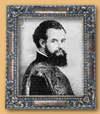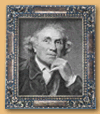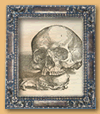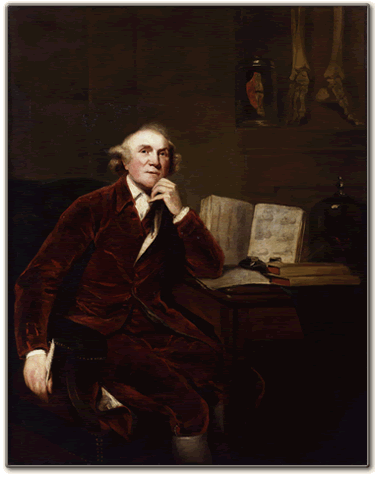
John Hunter, Painted by John Jackson
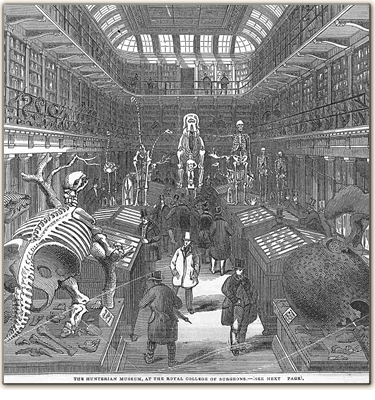
Illustration of Hunterian Musuem,
Royal College of Surgeons, London
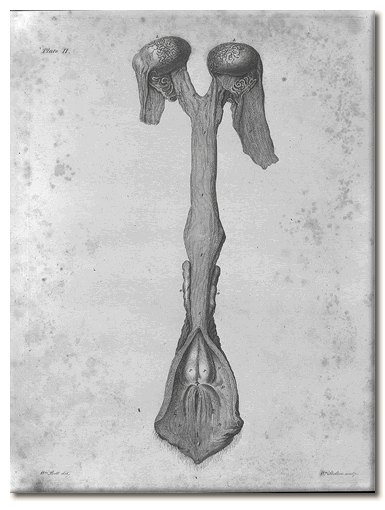
John Hunter,
Plate from
Observations of Certain Parts of the Animal Oeconomy
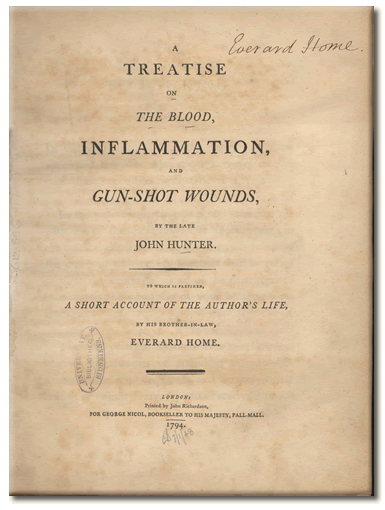

In the early 17th century, several anatomists working in the Vesalian-Harveian tradition made small discoveries that cleared ground for the influential Scottish anatomist John Hunter. A major question that anatomists addressed concerned the very nature of human being: was the body simply a mechanism, a machine, or was something superadded to it? In response to this question, the anatomists of the early 17th century are often split into two camps: Mechanist and Anti-Mechanist.1 Herman Boerhaave (1668-1738), a Dutch anatomist, argued for a model of the human body that demonstrated it as an integrated, hydraulic system within which all pressures and flowing liquids were kept in equilibrium. According to Boerhaave, a healthy body allowed fluids to move without interference; the mechanistic body was a self-regulating. Thus, ill-health was attributed to an imbalance, block, or misdirection of the body’s fluids. Concerned with the body as “a plumbing network,” Boerhaave asserted that medicine should focus on the pragmatic, materialist issues and not speculate on teleology or first origins of life.2 In contrast, George Ernst Stahle (1660-1734), from the University of Halle, advanced anti-mechanistic claims about human anatomy and physiology. Stahl argued that the body enjoyed the presence of a soul (anima) that provided for and nurtured the organism. As such, this soul was the prevailing force in a given organism’s life.3 Both Boerhaave and Stahl (as well as their followers) created an intellectual space that was filled by the discoveries and claims of renowned anatomist and physiologist John Hunter (1728-1793), a figure who dominated late Enlightenment and Romantic-era medicine. (In fact, his influence was cross-disciplinary: many of his former apprentices and students served as faculty at Guy’s and St. Thomas’s hospital, where Keats trained and served as a surgical dresser from October 1815 until the spring of 1817). Younger brother to the distinguished anatomist William Hunter, who ran the school where John trained, Scottish-born Hunter is known furthering the intersection of physiological theory and anatomical observations.4 While anatomists who preceded Hunter took a rigidly mechanistic view of the animal body, asserting that life in animal bodies resolved to the function of coordinate organs, Hunter broke with this purely materialist view. Instead, Hunter proposed that coordinate functions, not just organs, allowed life to occur in animal bodies. Through his work in comparative anatomy, Hunter developed the anatomical series as an instrument and arrived at his first assumption. Hunter identified similar functions between superficially different animal bodies. Instead of relying on taxonomical classification for understanding bodies across species, Hunter developed the anatomical series, a system of classification (and display) organized by anatomical function; Hunter arranged each series from “rudest” forms of animal bodies to the implied perfection of the human body.5 Despite his contention that the human body represented a high point of development, Hunter recognized similar process that occurred across a range of organs. Thus, he deduced that anatomical organization alone could not account for life.6 Therefore, Hunter posited that organs must be imbued with functions, “principles of action,” and that these functions act in coordination to sustain and regenerate life. Moreover, in a break from Vesalian ocular evidence, he hypothesize that these functions were animated by a “vital principle” that permeated even the smallest parts of the body.7 Hunter announced a dynamic, dyadic relationship between the normative body and normative society: “‘The more complicated a machine is, the more nice its operations are, and, of course, the greater dependence each part has upon the other; and, therefore, there is a more intimate connection through the whole. This holds good in society. It also holds good in the animal oeconomy.’”8 Youngquist summarizes Hunter’s argument when he writes, “If complexity and perfection meet in the human body, and if the human body is a paradigm of social structure, then its normal function becomes the measure of a just society.”9 Thus, Hunter’s work in comparative anatomy and the anatomical series established the basis upon which a new science of pathology, a discursive field that is both physically and morally regulatory, could grow from teratology and augur the rise of normalcy in the late 18th and 19th centuries.10 Finally, Hunter curated an extensive collection of specimens which he displayed at his museum in East Kilbride (The Hunter House Museum), and in 1783 he donated a vast collection to the University of Glasgow, which now houses the Hunterian Museum. Additionally, the Royal College of Surgeons in London houses a Hunterian Museum as well. |
![]()
